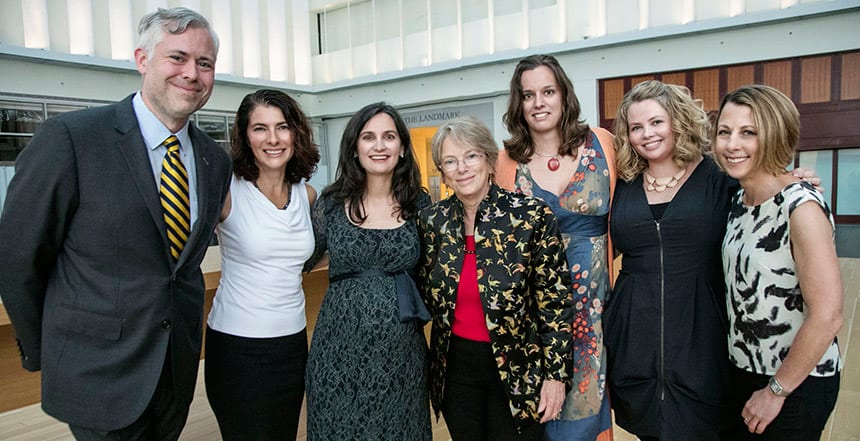
As a law student, Jordyn Ostroff ’16 spent two semesters working at Berkeley Law’s Samuelson Law, Technology & Public Policy Clinic, a time she described as “the most significant” part of her law school experience.
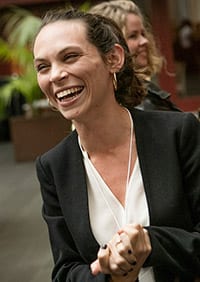
“The clinic really added dimension to my education,” she said at a recent celebration of the Samuelson Clinic’s 15-year anniversary. “It gave me a chance to interact directly with top scholars and helped connect the legal theory I learned in class to legal practice.”
Ostroff recounted her clinical work for the Authors Alliance, a nonprofit group that promotes authorship for the public good. Specifically, she conducted dozens of interviews with publishers, editors, authors and literary agents and produced an essential guide that helps authors reclaim book rights from their publishers. She said the clinic taught her to write with a team, to receive criticism and take direction, and to reflect on her work.
“I also learned about working hard because at the Samuelson Clinic, real people and real causes are waiting on your work product. It’s the real world of lawyering.”
Anniversary celebration
One of the nation’s leading clinical programs focused on law, technology and public policy, the Samuelson Clinic was celebrated by more than 70 alumni and friends at last month’s anniversary event in San Francisco. The first clinic in the country to train students in public interest work on emerging technologies, privacy, intellectual property, free speech, consumer and citizen interests in technology and other information policy issues, it operates as a high-functioning, teaching-focused law office.
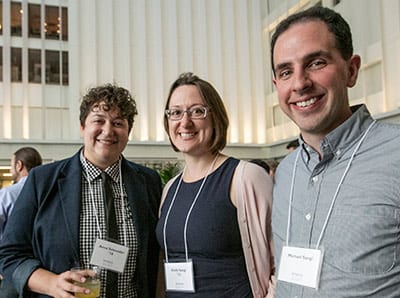
Clinic students have worked for clients such as the Motown Alumni Association, the Internet Archive, and various civil liberties organizations such as the ACLU and the Center for Democracy and Technology. Students have prepared legislative testimony, appeared before regulatory bodies and presented briefs to almost every circuit court in the country. Its 200 alumni work in all aspects of technology law, including in government (such as at the Federal Trade Commission and the White House Office of Science Technology Policy), at non-profits such as the Electronic Frontier Foundation, and at major tech companies and tech-focused law firms.
When it was founded more than 15 years ago, the Samuelson Clinic was the only one of its kind. Today, more than a dozen other law schools have opened technology clinics that follow its example.
Anna Schneider ’18 is a Samuelson Clinic student this semester. Having worked in the Civil Rights Division of the Department of Justice before law school, Schneider was drawn to the clinic because she’d discovered that “technology issues were creeping into every aspect of my social justice work,” she said. “Whether the issue is making Internet sites accessible to people with disabilities or understanding the Fourth Amendment implications of cellphone searches, technology law is omnipresent throughout all other areas of practice.”
Through the clinic, Schneider is partnering with ACLU of Northern California to analyze surveillance tactics in California. “One thing I will take away from the clinic is that as a lawyer, I need to be constantly thinking ahead—picturing the next technological innovation and imagining how that change implicates our current laws,” Schneider said.
The reach of technology
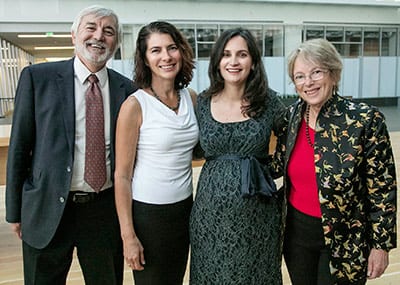
No matter the practice area, lawyers must navigate rapid technological change, which may affect clients in ways that were hard to foresee even a few years before, according to Jennifer Urban, the clinic’s first teaching fellow who now serves as its director. To that end, the Samuelson Clinic seeks a broad range of projects for students.
“We go where the social issues around technology go, and the reach of technology means that social issues arise everywhere,” Urban said. “We look to protect privacy, help artists and regular citizens express themselves, make space for innovation, help consumers navigate new technologies and address the differential challenges new technologies can create for people in different socioeconomic circumstances.”
Associate Director Catherine Crump said the clinic plans to further expand its work on surveillance and national security. “As technology becomes integrated into more and more aspects of daily life, the clinic’s docket will evolve to keep pace,” Crump said at the anniversary celebration. In particular, as camera footage has played a key role in bolstering civilian accounts of interactions with police officers, the clinic’s work has already touched on the use of law enforcement surveillance to monitor private citizens and more.
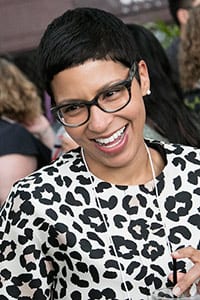
The clinic is also in the middle of a year-long collaboration with the East Bay Community Law Center examining the use of electronic monitoring for juveniles on intensive probation.
During the celebration, Interim Dean Melissa Murray recognized clinic founder Pam Samuelson who collaborated with a group of students to forge the clinic’s founding vision. Murray praised Samuelson for “working tirelessly” to persuade an initially skeptical faculty that “technology law raises important public interest questions.”
In honor of the anniversary, Samuelson and her husband Bob Glushko, a faculty member of the School of Information, pledged to match all gifts to the clinic up to $100,000. For more information, go here.
To see all the event photos, go here.